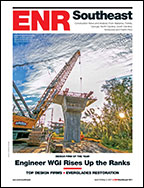Wire Rope Does Double Duty at Orangutan Center
Like their human cousins, orangutans are bright creatures that love to explore how the world around them works. This leaves zoologists with the unusual challenge of outsmarting the animals. “When you think of building something for a zoo, you don’t always think about the fact that the individuals that live there will disassemble it if you don’t put it together properly,” explains Rob Shumaker, vice president of conservation and life sciences for the Indianapolis Zoo.
When the zoo began work on the new International Orangutan Center, set to open May 24, scientists wanted to find cables comfortable enough for the animals to use for climbing but durable enough to last a long time.
The zoo turned to a longtime local rigging supplier, Tway Co., which donated consulting time and testing materials for the project. First, rigging engineers at the local company tested out assemblies with the orangutans in their temporary cages. “We watched them go one by one over every single attachment point,” says Peter Hansen, Tway’s president and chief executive officer.
For the platform towers, Tway decided on using 1.5-in.-dia steel wire rope encased in plastic and fitted with closed swaged sockets that fit over hooks welded to the structure. An extra plate is then welded over the hooks. “The whole idea behind the plastic was to keep sand and grit from getting into the rope and wearing it out,” says Hansen. The orange plastic coating stays cool in the summer and “does double duty for the comfort of the orangs,” adds Jonathan Hess, president of Browning Day Mullins Dierdorf.
Made by Kansas City, Mo.-based WireCo WorldGroup, the cables are lubricated and then sealed by being pulled through an injection molding die, where plastic heated to 500°F is forced into the strands, penetrating the core. Tway purchased the rope and fabricated the swaged assemblies, all of which the company ultimately donated to the zoo.










Post a comment to this article
Report Abusive Comment